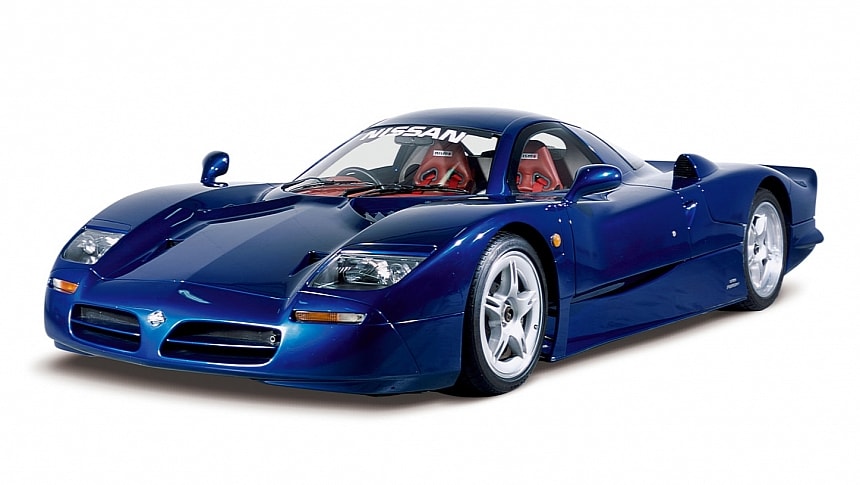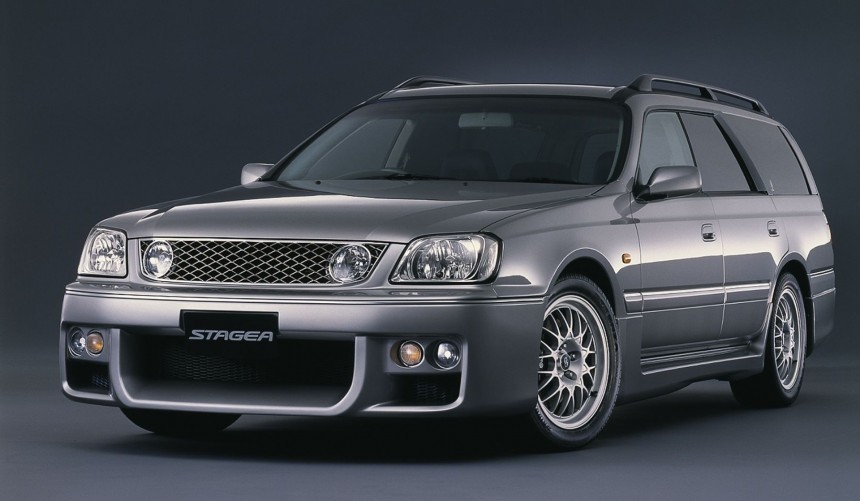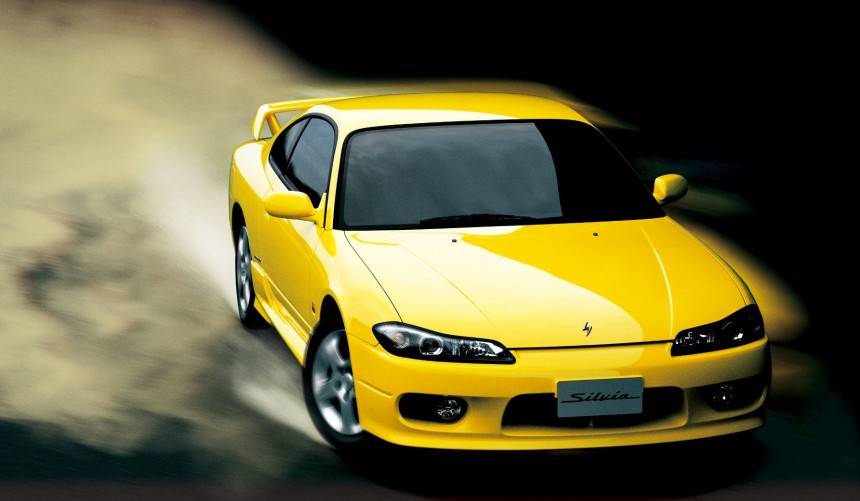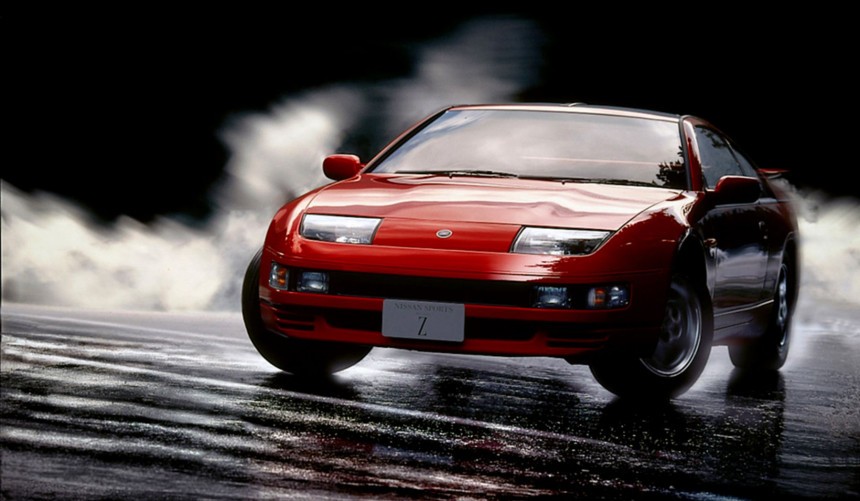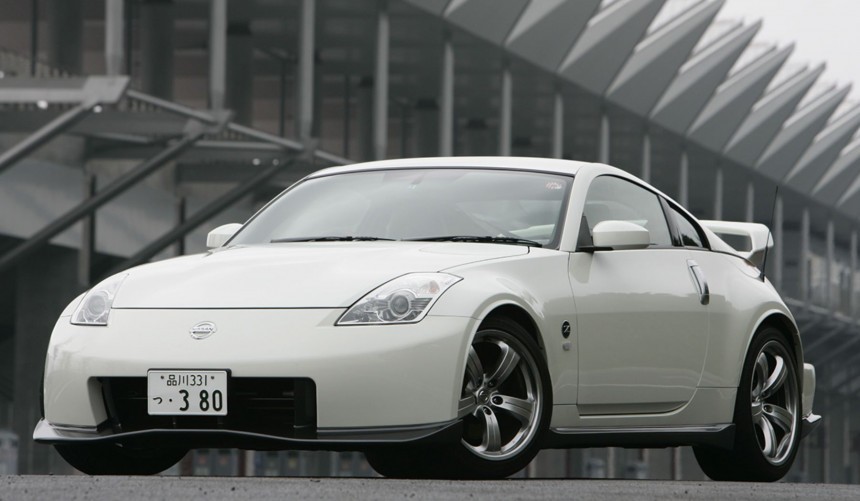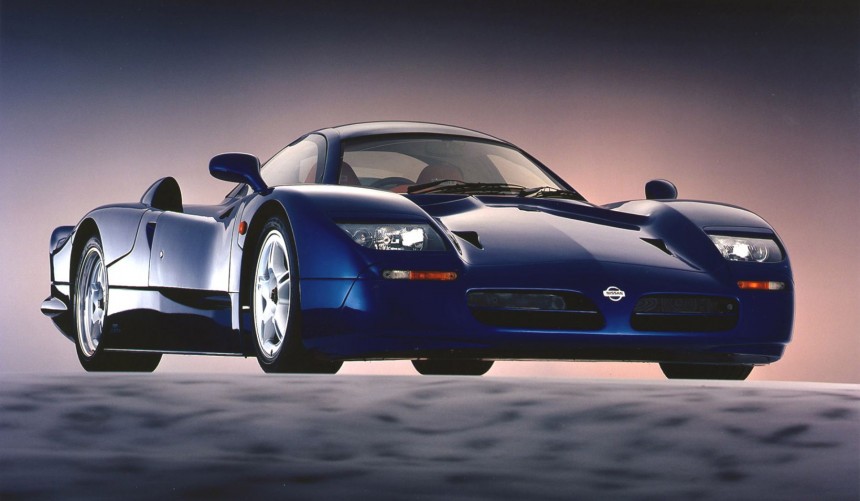When talking about Nissan's finest street-legal performance cars, the GT-R nameplate often comes up. However, the GT-R Skylines or the stand-alone R35 weren't the only iconic performance cars that the Japanese manufacturer has developed during its history.
Founded in the winter of 1933, the Nissan Motor Corporation is one of Japan's leading carmakers.
During its early years, the company focused on delivering well-built passenger cars, but from the late 1960s onwards, it began developing a series of exciting performance-oriented vehicles that became legendary.
Of those, the five generations of Skyline-based GT-Rs and the subsequent stand-alone model produced since 2007 are the most iconic.
Nevertheless, Nissan has also produced some exciting road cars that didn't feature GT-R badges.
Introduced in 1996, the Stagea was Nissan's flagship station wagon for the next eleven years.
With visual cues borrowed from the R34 Skyline and C35 Laurel, the Stagea initially shared many mechanical components with the R33 Skyline.
Only available in Japan, where it competed with the Subaru Legacy Touring, the wagon could be had with one of multiple inline-six versions in either RWD or 4WD configurations.
Unquestionably the greatest Stagea ever built was the 260RS. Developed by Nissan's in-house tuners Autech, this high-performance version was powered by the legendary 2.6-liter RB26DETT that, until that point, was exclusive to the Skyline GT-R.
Apart from the twin-turbo engine, the 260RS featured the R33 GT-R's ATTESA E-TS all-wheel drive system complete with a limited-slip differential, a unique body kit, and several other upgrades that made it one of the wildest wagons ever produced in Japan.
The 260RS was built from 1997 to 2001 in a limited run of 1,734 units.
About five years before the first Skyline GT-R made its debut, Nissan surprised everyone by introducing the CSP311 Silvia at the 1964 Tokyo Motor Show.
Initially called Datsun Coupé 1500, but released as a production car called Nissan Silvia in 1965, the model laid the groundwork for a long-lasting compact sports car nameplate.
After a seven-year hiatus, the Silvia returned in 1975 and was continually produced until 2002 in six distinct generations.
The last, codenamed S15, was launched in 1999, hoping that it would be more successful than the S14, which struggled against fierce competition.
Built around the FWD S-platform and powered by the great SR20 inline-four, the S15 was available in two trim levels. The first was the spec-S, which fgeatured a naturally-aspirated version of the engine, while the range topper was the spec-R, that received a turbocharged version of the same engine.
Additionally, each trim could be had with the optional Aero package, which added distinct bumpers, side skirts, and a spoiler to improve aerodynamics.
With 247-hp on tap, a six-speed manual, and a limited-slip differential, the Silvia spec-R became a cult hero across the world and managed to be far more succesful than the S14.
Favored by drifters all around the world, the S15 spec-R continues to be one of the most popular performance-oriented rides ever developed by Nissan.
Apart from the Skyline GT-Rs and the Silvia, Nissan has been producing GT-style sports cars for seven distinct generations.
Known colloquially as the Z (from its JDM Fairlady Z moniker), the model has competed with Japanese rivals like the Toyota Celica, Toyota Supra, Mitsubishi 3000GT, and Mazda RX-7 throughout its history.
The first Z that makes the cut on our list is the fourth generation produced from 1989 to 2000.
Codenamed Z32, it was designed to replace the Z31 Fairlady Z (aka 280ZX), which proved to be a hit in the North American market.
With a redesigned body that improved aerodynamics, better suspension geometry, and an improved engine, the new Z became one of the best-selling cars in the US during its first years of production.
In its most potent guise, dubbed 300ZX Twin Turbo (Fairlady Z Twin Turbo in Japan), the model was powered by a VG30DETT 3.0-liter, twin-turbo V6 capable of delivering 300 hp.
Apart from the potent engine, the Twin Turbo featured an adjustable two-way suspension and Nissan's Super HICAS (High Capacity Actively Controlled Steering) four-wheel steering system.
One of the most thrilling sports cars in its price range, the Z32 300ZX Twin Turbo was available in several JDM-only editions like the Version R pictured above, which came with distinct bumpers and spoilers.
The next member of Nissan's iconic Z range on our list is the 350Z, the 300ZX's immediate successor.
Initially released in the summer of 2002, the 350Z (Fairlady Z in Japan) marked the first time a Z featured a front mid-engine layout.
While the standard 350Z was a great sports car, it wasn't as successful as its predecessor, especially on American shores.
But, sales prowess aside, the 350Z was the base for one of the most impressive street-legal Nissan performance cars ever built.
In 2007, Nissan's motorsport division, NISMO, launched a thoroughly improved, race car-inspired version called Type 380RS.
Donning a unique body kit and numerous upgrades such as Brembo performance brakes, Yamaha-engineered shocks, and RAYS alloys, the limited-edition model was powered by a detuned version of the 3.8-liter 380RS-C race engine, rated at 348 hp.
Priced at $38,695 ($58,612 today), the Type 380RS was built in 300 units and was only available for customers in Japan.
Nissan returned to motorsport in an official capacity in 1995, and its NISMO division was tasked with creating a GT1 endurance prototype that could compete at Le Mans in 1997.
Though a lot of time and effort was poured into the project, the resulting race car dubbed R390 GT1 failed to impress. Out of the three cars that entered the 1997 Le Mans race, only one managed to cross the finish line in a disappointing 12th position.
Nissan returned with an improved design and an additional car for the 1998 edition of the famous race, but it failed to become the second Japanese manufacturer to win Le Mans. Nevertheless, all four cars finished the race in the 3rd, 5th, 6th, and 10th positions.
Apart from the race cars, the R390 GT1 project yielded a street-legal version built to comply with homologation requirements.
Nearly identical to the race cars (save for the rear spoiler), the road-going R390 GT1 featured a more passenger-friendly interior and was powered by the same twin-turbocharged VRH35L V8.
The engine was allegedly detuned to 345 hp, but in reality, it was set up to produce well over 500 horses.
Like Porsche with the 911 GT-1 and Mercedes-Benz with the CLK GTR, Nissan offered to produce additional road-going R390 GT1 units via special order.
However, since the asking price exceeded $1 million and nobody committed to paying such an exorbitant amount, no additional street-legal R390 GT1s were ever built by the Japanese manufacturer.
During its early years, the company focused on delivering well-built passenger cars, but from the late 1960s onwards, it began developing a series of exciting performance-oriented vehicles that became legendary.
Of those, the five generations of Skyline-based GT-Rs and the subsequent stand-alone model produced since 2007 are the most iconic.
Nevertheless, Nissan has also produced some exciting road cars that didn't feature GT-R badges.
1997-2001 Nissan Stagea Autech 260RS
With visual cues borrowed from the R34 Skyline and C35 Laurel, the Stagea initially shared many mechanical components with the R33 Skyline.
Only available in Japan, where it competed with the Subaru Legacy Touring, the wagon could be had with one of multiple inline-six versions in either RWD or 4WD configurations.
Unquestionably the greatest Stagea ever built was the 260RS. Developed by Nissan's in-house tuners Autech, this high-performance version was powered by the legendary 2.6-liter RB26DETT that, until that point, was exclusive to the Skyline GT-R.
Apart from the twin-turbo engine, the 260RS featured the R33 GT-R's ATTESA E-TS all-wheel drive system complete with a limited-slip differential, a unique body kit, and several other upgrades that made it one of the wildest wagons ever produced in Japan.
The 260RS was built from 1997 to 2001 in a limited run of 1,734 units.
1999-2002 Nissan Silvia spec-R
Initially called Datsun Coupé 1500, but released as a production car called Nissan Silvia in 1965, the model laid the groundwork for a long-lasting compact sports car nameplate.
After a seven-year hiatus, the Silvia returned in 1975 and was continually produced until 2002 in six distinct generations.
The last, codenamed S15, was launched in 1999, hoping that it would be more successful than the S14, which struggled against fierce competition.
Built around the FWD S-platform and powered by the great SR20 inline-four, the S15 was available in two trim levels. The first was the spec-S, which fgeatured a naturally-aspirated version of the engine, while the range topper was the spec-R, that received a turbocharged version of the same engine.
Additionally, each trim could be had with the optional Aero package, which added distinct bumpers, side skirts, and a spoiler to improve aerodynamics.
With 247-hp on tap, a six-speed manual, and a limited-slip differential, the Silvia spec-R became a cult hero across the world and managed to be far more succesful than the S14.
Favored by drifters all around the world, the S15 spec-R continues to be one of the most popular performance-oriented rides ever developed by Nissan.
1989-1996 Nissan 300ZX Twin Turbo
Known colloquially as the Z (from its JDM Fairlady Z moniker), the model has competed with Japanese rivals like the Toyota Celica, Toyota Supra, Mitsubishi 3000GT, and Mazda RX-7 throughout its history.
The first Z that makes the cut on our list is the fourth generation produced from 1989 to 2000.
Codenamed Z32, it was designed to replace the Z31 Fairlady Z (aka 280ZX), which proved to be a hit in the North American market.
With a redesigned body that improved aerodynamics, better suspension geometry, and an improved engine, the new Z became one of the best-selling cars in the US during its first years of production.
In its most potent guise, dubbed 300ZX Twin Turbo (Fairlady Z Twin Turbo in Japan), the model was powered by a VG30DETT 3.0-liter, twin-turbo V6 capable of delivering 300 hp.
Apart from the potent engine, the Twin Turbo featured an adjustable two-way suspension and Nissan's Super HICAS (High Capacity Actively Controlled Steering) four-wheel steering system.
One of the most thrilling sports cars in its price range, the Z32 300ZX Twin Turbo was available in several JDM-only editions like the Version R pictured above, which came with distinct bumpers and spoilers.
2007 Nissan Fairlady Z Version NISMO Type 380RS
Initially released in the summer of 2002, the 350Z (Fairlady Z in Japan) marked the first time a Z featured a front mid-engine layout.
While the standard 350Z was a great sports car, it wasn't as successful as its predecessor, especially on American shores.
But, sales prowess aside, the 350Z was the base for one of the most impressive street-legal Nissan performance cars ever built.
In 2007, Nissan's motorsport division, NISMO, launched a thoroughly improved, race car-inspired version called Type 380RS.
Donning a unique body kit and numerous upgrades such as Brembo performance brakes, Yamaha-engineered shocks, and RAYS alloys, the limited-edition model was powered by a detuned version of the 3.8-liter 380RS-C race engine, rated at 348 hp.
Priced at $38,695 ($58,612 today), the Type 380RS was built in 300 units and was only available for customers in Japan.
1997 Nissan R390 GT1
Though a lot of time and effort was poured into the project, the resulting race car dubbed R390 GT1 failed to impress. Out of the three cars that entered the 1997 Le Mans race, only one managed to cross the finish line in a disappointing 12th position.
Nissan returned with an improved design and an additional car for the 1998 edition of the famous race, but it failed to become the second Japanese manufacturer to win Le Mans. Nevertheless, all four cars finished the race in the 3rd, 5th, 6th, and 10th positions.
Apart from the race cars, the R390 GT1 project yielded a street-legal version built to comply with homologation requirements.
Nearly identical to the race cars (save for the rear spoiler), the road-going R390 GT1 featured a more passenger-friendly interior and was powered by the same twin-turbocharged VRH35L V8.
The engine was allegedly detuned to 345 hp, but in reality, it was set up to produce well over 500 horses.
Like Porsche with the 911 GT-1 and Mercedes-Benz with the CLK GTR, Nissan offered to produce additional road-going R390 GT1 units via special order.
However, since the asking price exceeded $1 million and nobody committed to paying such an exorbitant amount, no additional street-legal R390 GT1s were ever built by the Japanese manufacturer.
